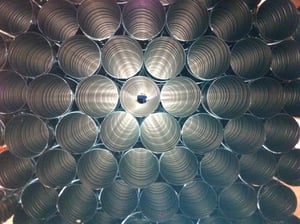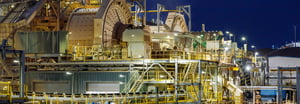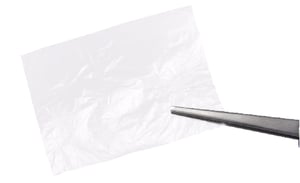Amur Minerals Corporation (LON:AMC), a nickel-copper sulphide mineral exploration and resource development company focused on its Kun-Manie project in the Russian Far East, has today reported its 2017 maiden set of drill results for the Kubuk (“KUB”) deposit.
Included are all results for the period from 5 May 2017 through 30 June 2017. Infill drilling, to convert existing JORC Inferred resource to Indicated, has been completed, mineral dip limit determination at depth has been completed to define the potential deep limits of mining and resource expansion drilling has been successfully initiated.
Highlights:
· Resource expansion at KUB has thus far been successful and an additional total of 300 metres of mineralised length in excess of 0.4% nickel and at a minimum thickness of 3.0 metres has been identified within six drill holes. Additional ore has been identified at both the eastern limit (“LK”) (100 metre extension) and at the western limit (“BK”) (200 metre extension) of the KUB JORC resource.
· The 200 metre westernmost extension of the BK target is located within the 2,500 metre long undrilled target linking the KUB and Ikenskoe / Sobolevsky (“IKEN”) deposits. Four holes averaging 19.8 metres in thickness, 0.80% nickel and 0.21% copper have been completed. A fifth hole is presently under analysis by Amur’s site sample preparation facility and substantial sulphide mineralisation is present indicating likely economic grades of nickel and copper are present.
· Additional resources have also been identified at the LK target for a distance of an additional 100 metres eastward from the KUB deposit in the direction of a 1.0 kilometre long eastern target. Limited drilling indicates mineralisation of 3.8 metres averaging 1.02% nickel and 0.28% copper. Substantial nickel and copper anomalies based on geochemical sampling and trenching within the remaining 900 metres of the eastern target remain untested, representing additional expansion potential.
· Infill drilling of the currently defined Inferred Mineral Resource Estimate of 10.9 million tonnes averaging 0.74% nickel and 0.20% copper has been completed. Eight infill holes have defined an average of 0.80% nickel and 0.27% copper at an average thickness of 22.6 metres per ore hole. The infill drilling is intended to convert the Inferred resource to Indicated.
· Drilling along the northern limit of the MRE model has been completed to define the potential mining limits of the mineralisation at depth. Six holes have been completed and the down dip limits of the mineralisation have been identified by four of the six holes. The two holes that intersected mineralisation indicated an average thickness of 7.0 metres per ore hole with grades of 0.74% nickel and 0.18% copper. Additional limited drilling may be required to fully establish the deeper limits of the economic mineralisation.
· Resource expansion drilling at KUB is currently the primary drill objective with metallurgical drilling planned for later in this year’s drill campaign.
· All reported analytical results have been internally derived using Niton XL2 500 X-Ray Fluorescence units (“RFA”). Final independently generated Alex Stewart Laboratory (“ASL”) results will supplant the RFA results and will be the source of information for future resource estimates. Two batches of samples have been transported from the project site with the first delivered to ASL and now under analysis. The second batch of samples is in transit from Khabarovsk to Moscow.
The drill programme at KUB has been undertaken in a phased approach with the initial focus on defining the limits of the mineralisation at depth along a 600 metre long area and the completion of infill drilling to convert Inferred resource to Indicated.
Having successfully completed these two objectives, drilling is now focused on resource expansion on two KUB targets (BK and LK), which remain to be drill tested. The largest target (BK) is the trend between the IKEN and KUB deposits totaling 2,500 metres in length with the second target (LK) being a kilometre in length located immediately to the east of KUB. Drilling is now being conducted in a step out basis from both IKEN and KUB. Approximately 1,800 to 2,000 meters remain to be drilled to determine if the IKEN and KUB are one larger deposit approaching five kilometres in length. Successful drilling along this target could result in the combined length of KUB and IKEN forming the largest deposit at Kun-Manie.
Robin Young, CEO of Amur Minerals Corporation, commented: “Ralph Waldo Emerson stated, “Do not go where the path may lead, go instead where there is no path and leave a trail.” This quote characterises this year’s drill programme at Kun-Manie. Our new trail for resource expansion is now in full swing at our Kubuk and Ikenskoe / Sobolevsky deposits. We are drill testing the largest target with a length of 2,500 metres located between the two deposit, similar to the approach which was successfully implemented at the Maly Kurumkon / Flangovy deposit. Our drilling along this target could ultimately result in the linking up of the two deposits, creating a single deposit up to five kilometres in length and thus, making it the longest single deposit at Kun-Manie. Successful drilling could well result in a substantial increase in both the resource and reserve.
“Working in the steepest and most challenging terrain at Kun-Manie, our new trail is comprised of drill roads and drill pads that are being constructed along the length of this target. Both drill rigs are now drilling some of the deepest holes on site as we follow newly defined mineralisation outward in incremental steps.”







































